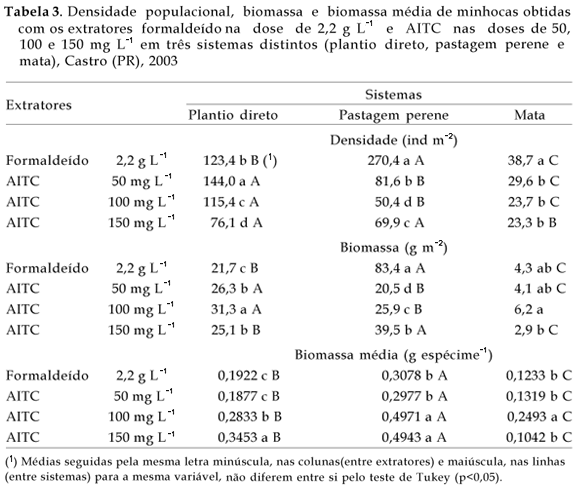Formaldehyde solution is the commonest substance used in the world to extract earthworm from soil despite of its harmful potential to humans and for the environment. Allyl isothiocyanate (AITC), a mustard oil, was tested under temperate climate condition. There is no record of its use on Brazilian soils. This research was established to evaluate the performance of different AITC rates compared to formaldehyde, under different soil uses at early summer. The experiment was established in a farm located at Castro county, Paraná State, Brazil, from 16 to 23 of December, 2003. Three ecosystems were selected: 1) no-tillage field used for crop-livestock; 2) permanent grassing pasture; and 3) araucaria native forest. In no-tillage, AITC 50 mg L-1 presented the highest density (144 individuals m-2), followed by formaldehyde (123.4 m-2), AITC 100 (115.4 m-2) and AITC 150 (76.1 m-2). For biomass, AITC 50, 100 and 150 mg L-1 extraction were superior to formaldehyde (21.7 g m-2). In permanent pasture, formadehyde gave three and two fold more density and biomass, respectively than the other treatments. In the forest, formaldehyde was superior to the AITC rates tested. However, AITC 50 and 100 mg L-1 were equivalent to formaldehyde for biomass. Megascolecidae, Octochaetidae and Lumbricidae were the three earthworm' families found in the experimental area. The use of AITC is prospective to determine density and biomass under no-till system. The results vary with extractor concentration and ecosystem.
earthworm; extraction; formaldehyde; AITC; density; biomass






